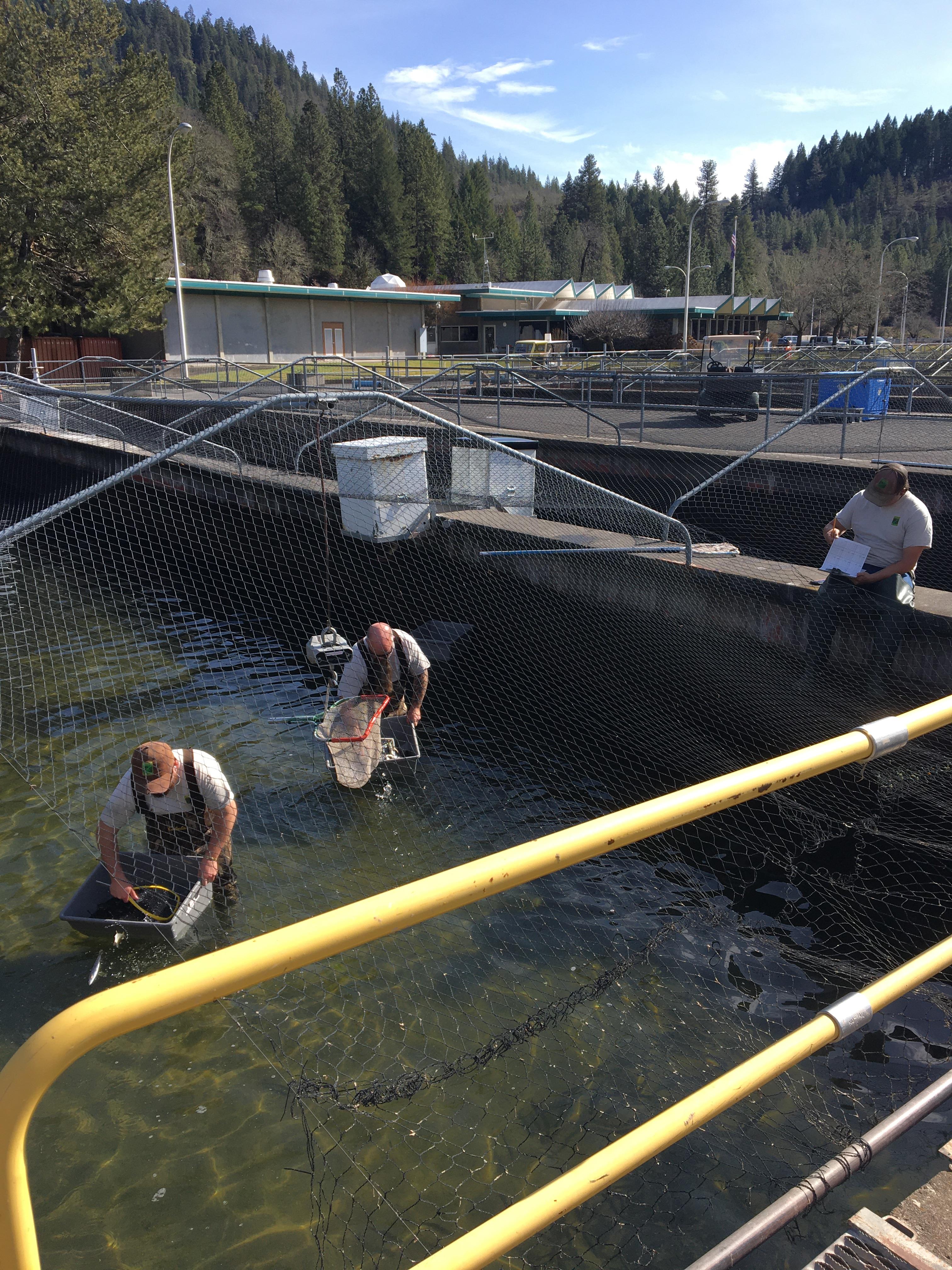
Water Supply
The water supply system for the hatchery is extremely complex and will be the biggest part of the
rehabilitation. The delivery and treatment system (mechanical filtration and UV sterilization) providing water to the hatch house is ineffective and insufficient for production needs. The work and discussions between ODFW and USACE has been ongoing for several years, and unfortunately poor water quality resulted in disease outbreaks, low oxygen events, and fish loss.
Concrete
The surface of many concrete structures, including the raceways and the fish ladder, has degraded over time which can result in leaks, provide a surface for algae to grow on, or increased the risk of abrasion in fish.
Roofing
Many of the roofs have substantial leaks that impact the integrity of the buildings.
Power Supply
In April 2021, the main electrical power feeder from Lost Creek Dam to the hatchery failed. This is a 4,675-foot-long underground direct buried cable. Multiple faults were isolated within a segmented 2,270-foot section of the cable. Splicing repairs were attempted and were unsuccessful, and it was determined that the entirety of the line needed replacement. Since then, CRH has been using generators (and backup generators) to provide electricity. However, these generators cannot supply the same wattage as the permanent power source.
The lack of adequate power means water heaters can’t be powered. This impacts growth rates for some production groups. The result is that it affects our ability to meet “size at release goals” which can reduce survival rates and pose a risk to naturally produced fish.
Operating costs are also significantly higher due to generator fuel and service costs.